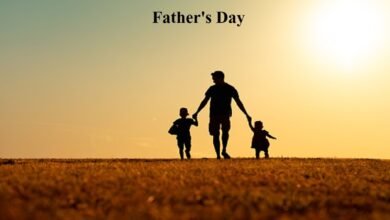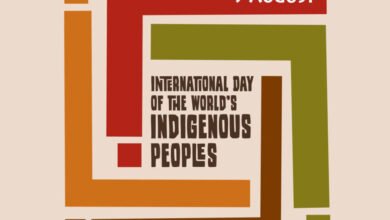World Day for Preventing and Healing from Child Sexual Exploitation and Abuse: A Global Call to Protect Every Child

Every year on November 18, the international community marks the World Day for the Prevention of and Healing from Child Sexual Exploitation, Abuse, and Violence. Established in 2022 by the UN General Assembly, this observance aims to raise awareness of child sexual abuse, strengthen global action, and support survivors in their journey toward healing and justice.
A Global Public Health Crisis
The World Health Organization reports that millions of children around the world experience sexual violence annually. These violations take many forms, including grooming, indecent exposure, coerced sexual activities, and sexual exploitation, such as the production and distribution of child sexual abuse material.
These crimes occur across diverse settings, at home, in schools, in communities, and online. Research shows that over 70% of abusers are known to the child, often family members or trusted acquaintances, highlighting the need for vigilance and protective systems within the child’s immediate environment.
Prevalence, Vulnerabilities, and Global Realities
Child sexual exploitation and abuse affect young people in every region of the world, regardless of culture, income level, or social class. Girls face a disproportionately high risk, especially in an environment marked by armed conflict, displacement, social instability, and weak child protection systems.
Current global challenges, including the long-term effects of the COVID-19 pandemic, rising inequality, structural discrimination, climate crises, and ongoing conflicts, further heighten children’s vulnerability. These conditions create environments where exploitation and abuse flourish and where protective measures remain insufficient.
Long-Term Impact and Barriers to Justice
The consequences of child sexual abuse can endure for a lifetime. Affected persons and survivors may suffer from:
- Severe physical injury
- Infections and reproductive health complications
- Neurological damage
- Long-term psychological effects such as anxiety, depression, PTSD, and C-PTSD
- Increased vulnerability to future victimization
Feelings of shame and fear often prevent survivors from speaking out or seeking help. Many never access justice, health care, or rehabilitation services. The stigma surrounding sexual violence remains one of the most significant barriers to healing.
Commitment Within the 2030 Agenda for Sustainable Development
The 2030 Agenda places children’s dignity and their right to live free from violence at its core. It calls for:
- Ending child exploitation, abuse, trafficking, and torture
- Eliminating harmful practices such as child, early, and forced marriage and female genital mutilation
- Strengthening justice systems
- Supporting the affected person’s recovery and reintegration
These global goals recognize that preventing child sexual abuse is essential for sustainable development, public health, and the protection of human rights.
Background of the UN Resolution
On November 7, 2022, the UN General Assembly adopted resolution A/RES/77/8, officially designating November 18 as the World Day for the Prevention of and Healing from Child Sexual Exploitation, Abuse, and Violence. The resolution underscores the urgency of eradicating these violations and emphasizes the rights, dignity, and well-being of affected children.
The observance is supported by more than 120 UN Member States, including Nigeria and Sierra Leone, and is marked by governments, UN agencies, civil society, faith communities, educational institutions, and other stakeholders.
Child Marriage as a Form of Sexual Abuse
Child marriage remains one of the most widespread forms of child sexual exploitation. Even where laws exist, long-standing cultural traditions frequently override legal protections.
According to UNICEF (2018), the highest rates of child marriage were found in:
Bangladesh, Chad, the Central African Republic, Guinea, Mali, Mozambique, Nepal, and Niger.
These marriages often expose children, particularly girls, to a lifetime of abuse, denied education, health risks, and severe psychological trauma.
Regional and International Efforts
Since 2015, the Council of Europe has observed European Day on the Protection of Children against Sexual Exploitation and Sexual Abuse on November 18. The campaign focuses on increasing awareness, encouraging open dialogue, and combating the stigmatization of survivors.
Globally, UNICEF estimates that one in five girls and one in seven boys will experience sexual abuse or exploitation before turning eighteen, a stark reminder of the scale and urgency of the crisis.
Theme for 2025
The theme for the 2025 commemoration is: “Strengthening the Protection of Children Against Sexual Exploitation and Sexual Abuse Through Evidence-Based Policy Making.”
This theme highlights the need for reliable data, research-driven strategies, and policies that are grounded in evidence to ensure stronger, more effective systems of protection.
A Call to Action
Ending child sexual exploitation and abuse requires a coordinated global effort. Key priorities include:
- Providing comprehensive, high-quality education on prevention
- Raising public awareness
- Expanding survivor-centered services
- Ensuring accountability for perpetrators
- Breaking the silence that enables abuse
- Promoting justice, healing, and dignity for survivors
On this World Day, stakeholders across sectors reaffirm their commitment to protecting children, supporting survivors, and building a world where every child can grow up safe, respected, and free from violence.





